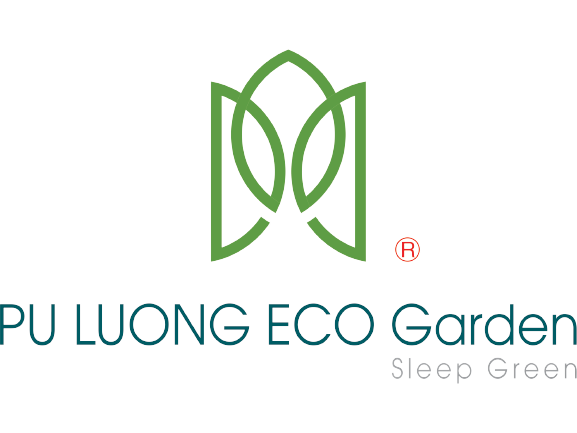Established in 1999, Pu Luong Nature Reserve lies approximately 180 kilometers southwest of Vietnam’s capital, Hanoi. It shares borders with Hoa Binh to the south and the Cuc Phuong National Park to the south. It encompasses both the Quan Hoa and Ba Thuoc districts within the Thanh Hoa province.
Encompassing a total area of 17,662 hectares, two-thirds of the reserve are dominated by lush tropical forest, making it the largest forested region on the Karts of Northern Vietnam. Pu Luong features three distinct types of forests: jungle, mountain, and bamboo forests.
Of the total area, only a third is inhabited, while the remaining portion is dedicated to protected and preserved landscapes.
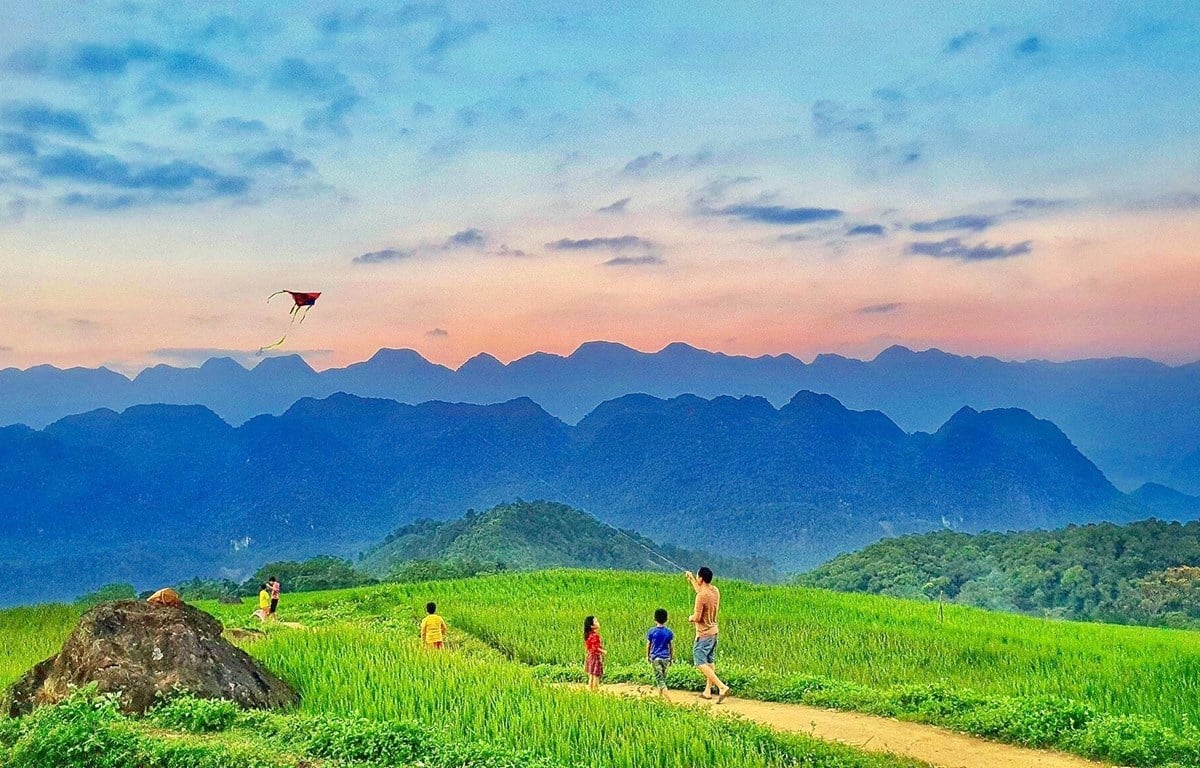
Geographical Features of Pu Luong Nature Reserve:
The Pu Luong Nature Reserve boasts a captivating scenery of limestone formations, with mountains cloaked in untouched forests and dense jungles. This mountainous region encompasses a significant portion of the land, resulting in concealed valleys interspersed within.
Referred to in the local language as “The highest peak in the area,” Pu Luong reaches its zenith at 1700m, a far cry from the towering peaks found in Lao Cai, Lai Chau, or Ha Giang to the north. While Pu Luong’s scale is more modest, it offers a more accessible destination for a wider array of people.
Additionally, Pu Luong has earned the moniker “the small Sapa” due to its terraced rice fields cascading down hillsides and nestled within valleys. Although these fields may not achieve the same grandeur as Sapa’s, their lower altitude fosters a more intimate connection with nature. The rice fields are dispersed across various areas.
On the Reserve’s eastern side, the Ma River traverses the valley, winding its way amidst karst peaks, enhancing the region’s beauty and tranquility. The local population harnesses this natural resource for fishing and irrigating rice fields and other crops. Within the jungle, numerous small streams, which swell during the rainy season, create petite waterfalls in various locations. A prime illustration of this can be found in Hieu village, where a multi-tiered waterfall adorns the village landscape.
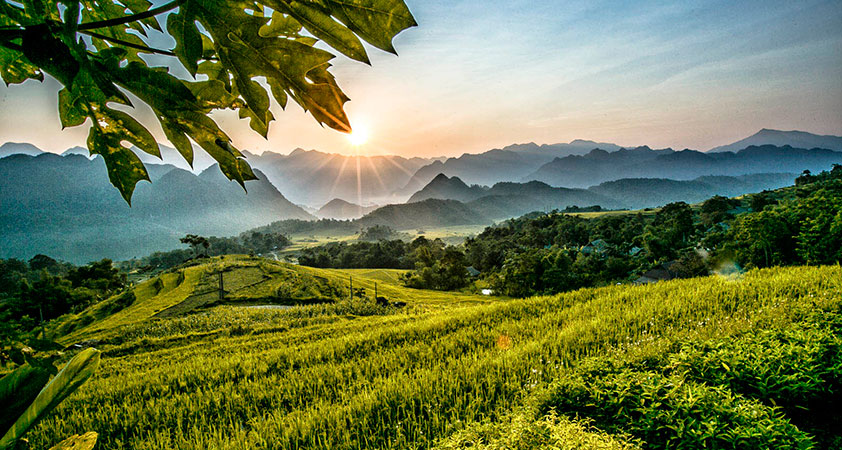
Inhabitants of Pu Luong Nature Reserve:
Upon your initial arrival at Pu Luong Nature Reserve, it’s easily mistaken that no indigenous communities inhabit this area. However, Pu Luong is indeed home to the Muong and Thai ethnic groups. The predominant population comprises the Black Thai, which constitutes one of Vietnam’s largest minority groups.
These communities reside in traditional wooden stilt houses, scattered across small villages or nestled in the mountains. The lower level typically serves as storage and shelter for animals like buffalo and pigs. The upper level, the living quarters, is divided into two sections. Finally, the larger area is designated for dining, hosting guests, and sleeping, featuring an open layout without internal partitions. The second part accommodates the kitchen, centered around a fireplace.
While they don’t wear traditional attire daily, making immediate recognition challenging, these communities diligently uphold all the customs and rituals of their respective minorities. Traditional costumes are reserved for special occasions such as weddings, funerals, or festivals. Their primary livelihood revolves around agriculture, cultivating rice, corn, and various vegetables. The Thai people have ingeniously devised bamboo waterwheels to irrigate their fields, a marvel you can admire along the Ma River or en route to Hieu village, depending on the season.
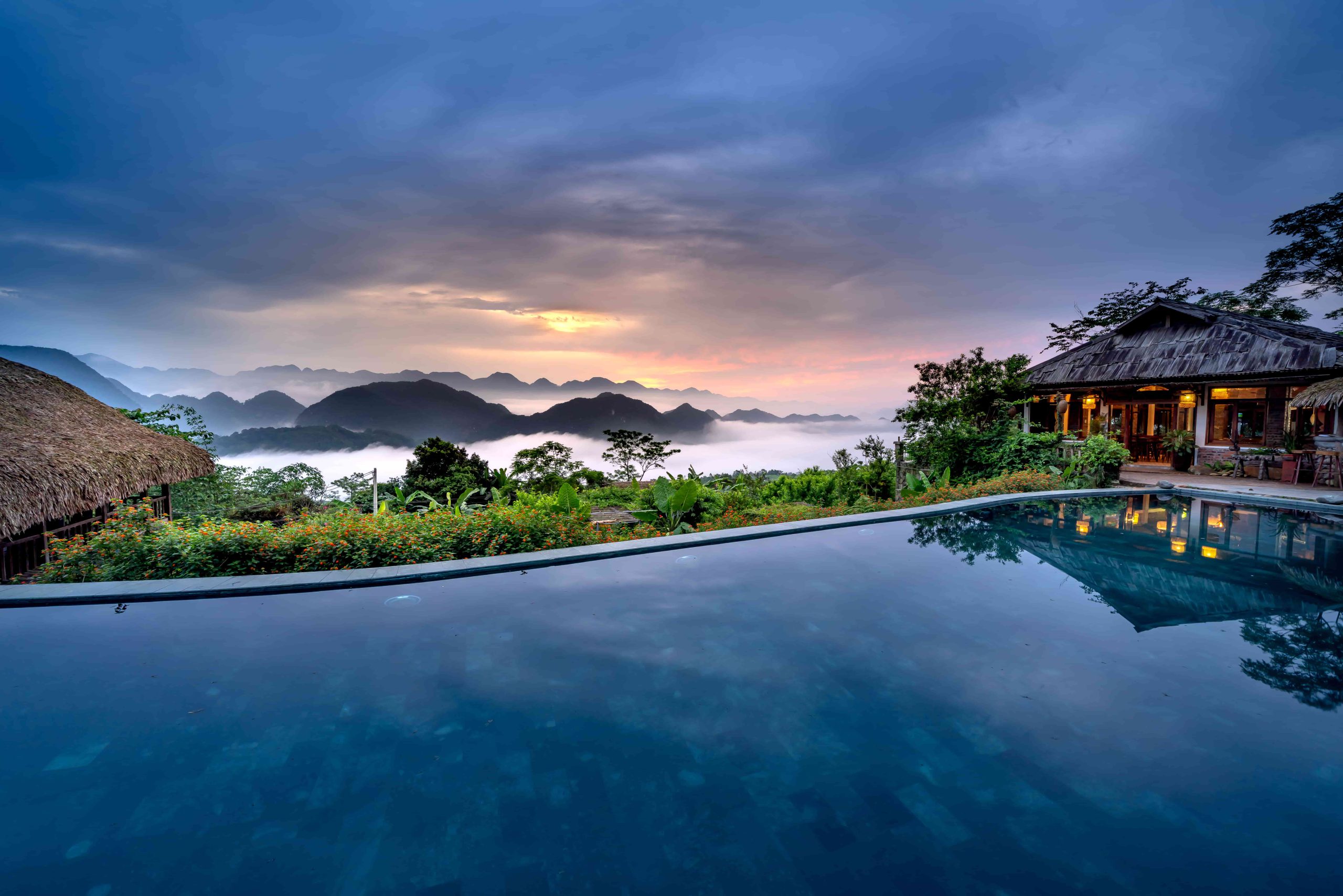
Villages:
The Reserve comprises a total of 24 villages, with only a handful of them having experienced any influence from tourism, resulting in alterations to their appearance.
Among these, Don Village stands out as the most developed, essentially serving as the hub of the tourist zone. Its distinctive location affords breathtaking vistas of rice fields and the mountain range. Accommodations in the village vary widely, ranging from traditional homestays to more upscale hotels.
Over the past three years, Hieu village has also undergone transformation, witnessing the proliferation of homestays throughout its environs. This change is attributed to the presence of a stream that courses through the village, creating a multi-tiered waterfall, facilitating water-based excursions during the dry season, and providing an opportunity for visitors to swim alongside amicable locals.
Kho Muong, arguably the most unique village, presents a distinct accessibility factor as it can only be reached by motorbike or on foot. Concealed within a secluded valley, it nestles amidst a circular mountain range adorned with rice terraces and the Reserve’s largest cave, known as the “Bat Cave.”
Nestled at the entrance of the Reserve (when arriving from Mai Chau), Bang village exudes a charming aura, characterized by ancient stilt houses and hospitable locals who are always ready to extend invitations for a cup of tea or a sampling of “Ruou,” the traditional rice wine.
Located at the southern extremity of the Reserve atop the Pha He and Pha Chien mountain range, Son Ba Muoi remains relatively underdeveloped. Yet, tourists are drawn to this spot to relish the refreshing ambiance and pristine nature, coupled with awe-inspiring panoramic views.
Numerous other villages dot the Reserve, each lesser-known yet deserving of a visit for an immersive experience in local culture.
Location and accessibility:
Situated to the southwest of Hanoi, approximately 180km away, Pu Luong Nature Reserve has become easily reachable in recent times, boasting a conveniently central position amidst well-known regions. A mere 40km separates it from Mai Chau, and it is positioned 140km from Ninh Binh, akin to an inland Halong Bay.
Three primary routes grant access to the Reserve. Travelers seeking to combine their visit with the splendid Mai Chau valley journey will travel toward Hoa Binh via QL6, passing through Mai Chau and subsequently embarking on the mountainous path through Xa Phu Le village along QL15c until they arrive at Bang village.
The swiftest and most direct route is via the Ho Chi Minh road, which the First Class bus utilizes to reach Pu Luong Nature Reserve in approximately 4.5 hours, inclusive of a rest stop along the way.
While the longest route, it is arguably the most scenic, involving a passage through Son Ba Muoi. Commencing from Mai Chau’s direction, one takes a left onto Dt440 until reaching the heart of the Reserve. This option is recommended for enthusiastic motorbike riders or those with a private vehicle and leisure time.
For more comprehensive information, our articles delve into greater detail regarding the diverse avenues to access the reserve >

Weather in Pu Luong Nature Reserve:
Pu Luong Nature Reserve, like all regions in Northern Vietnam, experiences distinct seasons throughout the year.
Visiting the Reserve is a rewarding experience regardless of the time of year, though certain periods are more conducive to specific activities and fully appreciating Pu Luong’s offerings.
During the winter months, spanning from December to March, Pu Luong can be quite chilly, especially during the nighttime. Mist and occasional light rain might obscure the scenery and disrupt plans. While these conditions aren’t constant, the sunny days offer excellent opportunities for extensive treks within the reserve.
Moving into March and April, the atmosphere takes on a more spring-like quality. Daytime temperatures rise, averaging around 25°C, although occasional dips to 15°C are possible. This season brings unpredictable weather patterns—periods of sunshine can alternate with stretches of mist and rain. Carrying a light raincoat and wearing appropriate footwear ensures a comfortable experience during activities.
The months from May to September see temperatures escalate significantly, particularly in June due to heightened humidity. The sun predominates, gracing most days with its presence. Intermittent intense storms may light up the nighttime skies, resembling natural fireworks. This stunning spectacle can be enjoyed from your room’s balcony or the hotel’s terrace. The advantage of the mountainous location is that nights always bring cooler temperatures.
By October and November, Pu Luong Nature Reserve is at its prime. The thermometer hovers around a pleasant 25°C, and clear blue skies are a daily occurrence. This period provides the perfect opportunity to marvel at the golden rice fields and observe farmers engaged in their harvest activities.
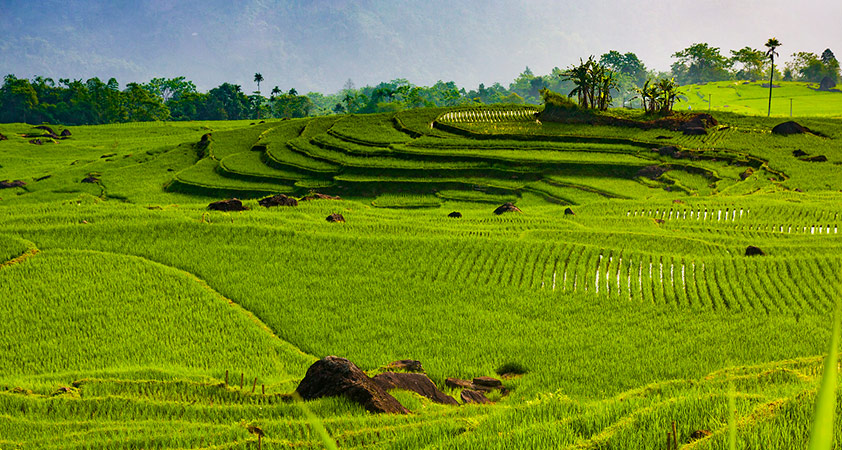
The rice fields in Pu Luong Nature Reserve:
The unique characteristic of Pu Luong’s mountainous terrain lies in its ability to support two rice crops annually. This phenomenon has driven rapid tourism growth, offering picturesque rice fields in various stages throughout most of the year—be it the reflective, emerald, or golden vistas.
Outlined below are the distinct seasons for observing the rice paddies. It’s worth noting that rice cultivation adapts to the climate, introducing some variability. Moreover, the valley and mountain rice exhibit different growth patterns and harvesting timelines. This dynamic presents a valuable asset to Pu Luong Nature Reserve, allowing visitors to witness harvesting activities in certain locales and encounter the golden fields in others.
Between November and March, the fields undergo a period of rejuvenation, preparing for the forthcoming season. These rice paddies lie fallow, transforming into a domain for buffaloes. A similar scene emerges partially in June, following the initial crop’s harvest and preceding the fields’ reflooding.
Throughout March to mid-April and in July, the rice terraces glisten with water. Creating a mesmerizing mirror effect that reflects the sky. This enchanting sight reaches its zenith during sunrise and sunset, when all elements harmonize in a magical display.
From mid-April to mid-May, as well as from August to September, vibrant green carpets envelop the rice as it flourishes. Coupled with the primal forests and mountainous jungles, the region becomes a canvas of myriad green hues.
Subsequently, from mid-May to June and again from October to early November, the landscape takes on a golden hue, signifying the harvest season. Farmers don their iconic conical hats and traverse the fields, gathering the ripe rice.
Highlights of Pu Luong Nature Reserve:
To gain a comprehensive understanding of Pu Luong Nature Reserve’s abundant offerings, a compilation of key attractions is presented.
- The Natural Splendor: Preserved and unspoiled, the Reserve’s landscapes captivate with their breathtaking and diverse beauty. The interplay of vibrant greens and the contrasting features between valleys and mountains, rice paddies and jungles, primary forests, palm groves, bamboo thickets, and shrubbery engage all your senses.
- The Local Community: The amiable local Thai inhabitants rank among Vietnam’s warmest and most hospitable. As you traverse the region, their smiles and exuberance greet you. Always eager to extend an invitation for tea or involve you in their everyday activities, such as rice harvesting.
- Culinary Delights: The region’s rich agricultural diversity translates into an array of delectable dishes. Pu Luong is renowned for its savory duck dishes. Additionally, an assortment of items is sourced directly from the jungle, naturally cultivated. Including bamboo shoots, banana flowers, and an assortment of wild herbs.
Collectively, Pu Luong Nature Reserve offers an ideal destination for enjoyable vacations. Whether you seek a leisurely and serene experience or crave an adventurous escapade, myriad possibilities abound, catering to a wide range of preferences and accessible to all.
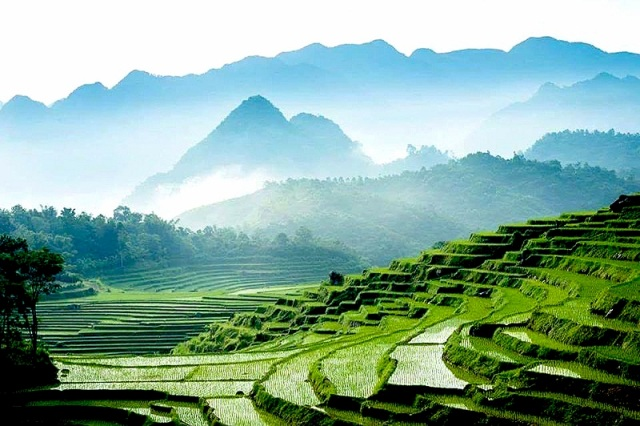
Tourism development in Pu Luong Nature Reserve
Pu Luong Nature Reserve emerged as a relatively recent discovery for extended excursions from Hanoi. Offering an appealing destination for multi-day trips. Its distinctive geographic location has facilitated the creation of comprehensive travel packages, particularly when paired with Mai Chau. These two neighboring yet distinct locales provide an opportunity for travelers to experience contrasting atmospheres within a brief timeframe.
Despite experiencing rapid growth and an influx of both domestic and international visitors, the region has admirably maintained its genuine character, allure, and tranquility. Villages like Don and Hieu have nearly realized their full potential. They have effectively preserved the essence that contributes to the allure of North Vietnamese villages.
A notable advantage is the stringent regulation limiting structures to a maximum of two stories. This means that regardless of your trekking, cycling, or riding route, you’ll be treated to unspoiled and breathtaking natural vistas.
Furthermore, the evolution of tourism has led to a diverse array of lodging options, catering to a wide spectrum of preferences – from traditional dormitories to well-appointed, luxurious bungalows.
Additionally, the activities available have now expanded to encompass a wide spectrum. Ranging from extensive treks and cycling expeditions to bamboo rafting, jeep tours, and more. For an exhaustive list, please consult our comprehensive Pu Luong travel guide.
Should you require additional details or have any inquiries, please do not hesitate to get in touch with us through the provided contact information.
